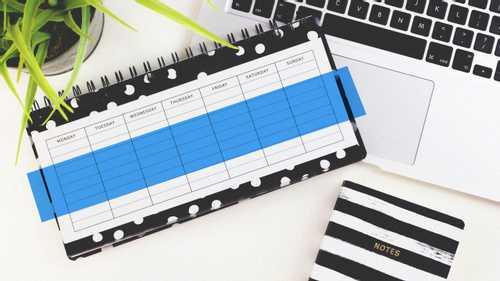Use these 5 scheduling methods when a to-do list just isn't working
Curated from: fastcompany.com
Ideas, facts & insights covering these topics:
5 ideas
·21.8K reads
13
Explore the World's Best Ideas
Join today and uncover 100+ curated journeys from 50+ topics. Unlock access to our mobile app with extensive features.
The time-blocking method
Simply means planning out your day in advance and dedicating specific hours to accomplish specific tasks.
Doing this requires determining in advance what you will accomplish and exactly when you will accomplish it. Once you have those in mind, enter these into your calendar and then get to work on those tasks at the appropriate time during the day.
1.84K
5.08K reads
The most important task method (MIT)
Rather than writing out a massive to-do list and trying to get it all done, determine the 1-3 tasks that are absolutely essential and then relentlessly focus on those tasks during the day.
Once you determine your 1-3 most important tasks, they are scheduled first in your day. You then make progress on essential items before you get bombarded by distractions.
1.97K
3.78K reads
The Pomodoro Technique
Is all about working in short, massively productive, intensely focused bursts, and then giving yourself a brief break:
- Choose a task
- Set your timer for 25 minutes
- Work on the task until the timer ends
- Take a short break (around 5 minutes)
- Every 4 Pomodoro sessions, take a longer break (15-30 minutes).
2.07K
4.03K reads
90-minute focus sessions
You take full advantage of the energy peaks and troughs that occur throughout your day: Work 90 minutes and then rest for 20-30 minutes.
Working in 90-minute bursts allows you to correlate your maximum energy levels with your task list, which then gives your productivity a major boost. You’re working with your body instead of against it.
2.01K
3.97K reads
Polyphasic sleep method
Polyphasic sleepers break up sleep into multiple short phases, which allows for less sleep overall and significant increases in productivity.
The amount of sleep in each phase can vary, with some people sleeping only in 20-minute naps and others grabbing larger chunks of sleep and then supplementing with naps.
1.71K
4.92K reads
IDEAS CURATED BY
Angel 's ideas are part of this journey:
Learn more about timemanagement with this collection
Effective note-taking techniques
Test-taking strategies
How to create a study schedule
Related collections
Similar ideas
16 ideas
The best time management strategies for scheduling your day, week, or life
blog.rescuetime.com
11 ideas
Is there a perfect productivity system?
nesslabs.com
Read & Learn
20x Faster
without
deepstash
with
deepstash
with
deepstash
Personalized microlearning
—
100+ Learning Journeys
—
Access to 200,000+ ideas
—
Access to the mobile app
—
Unlimited idea saving
—
—
Unlimited history
—
—
Unlimited listening to ideas
—
—
Downloading & offline access
—
—
Supercharge your mind with one idea per day
Enter your email and spend 1 minute every day to learn something new.
I agree to receive email updates
